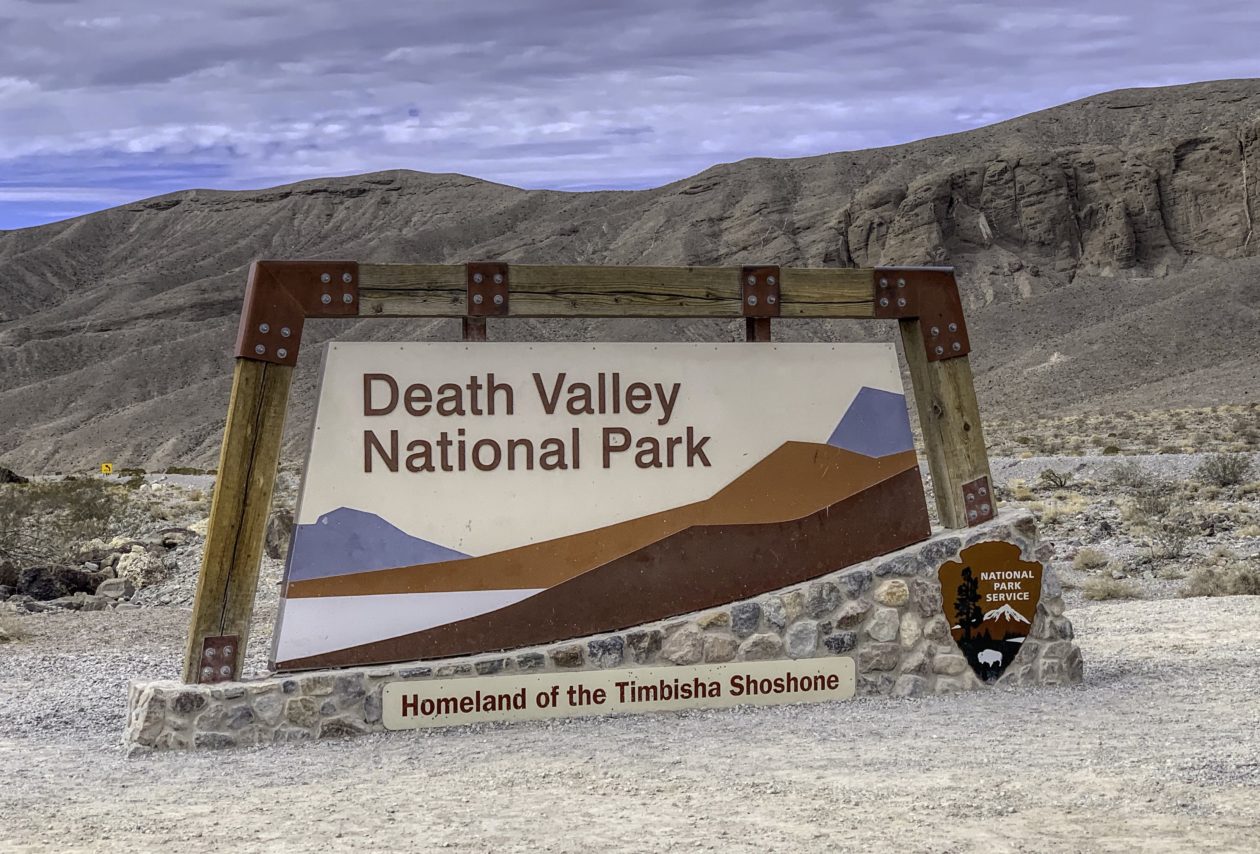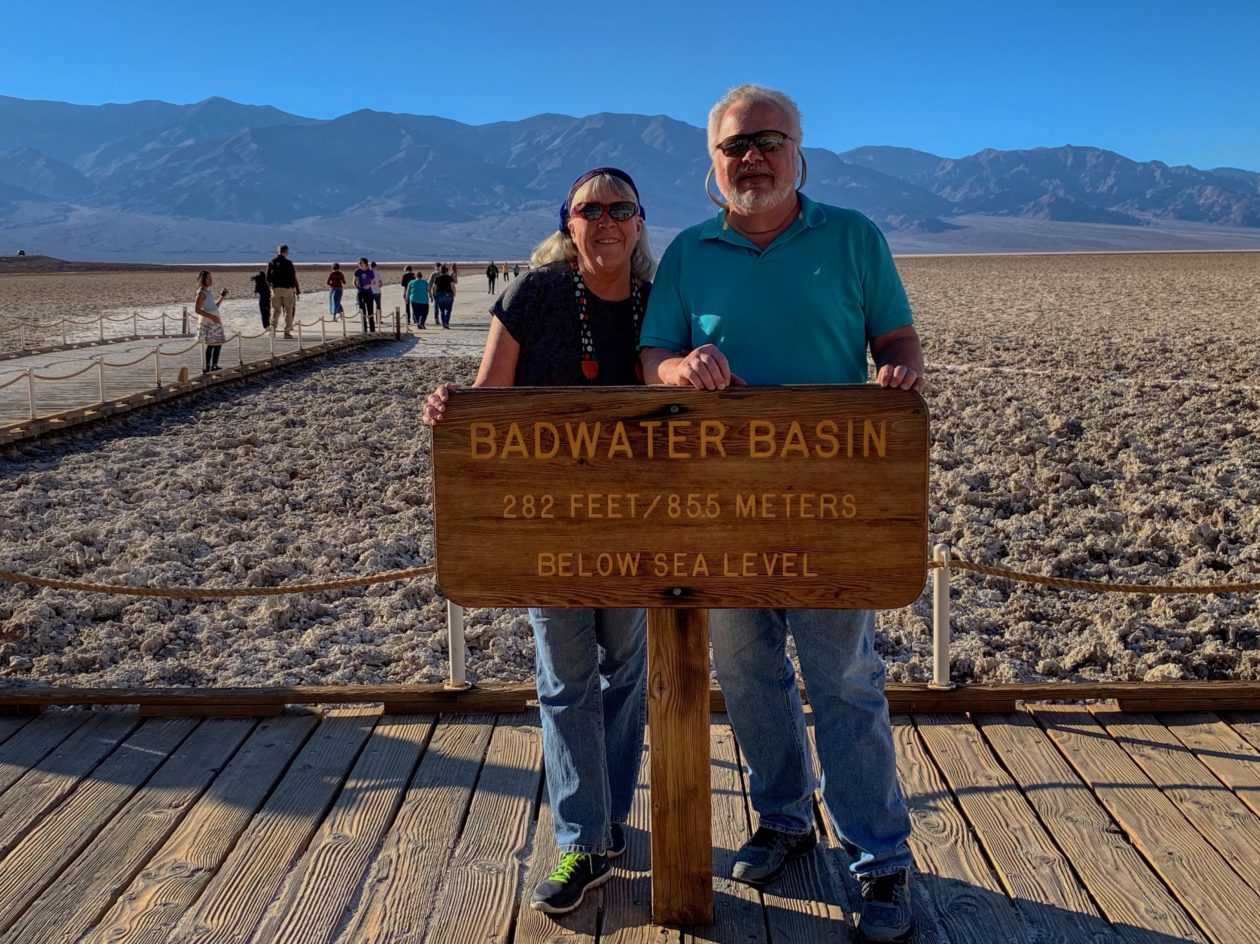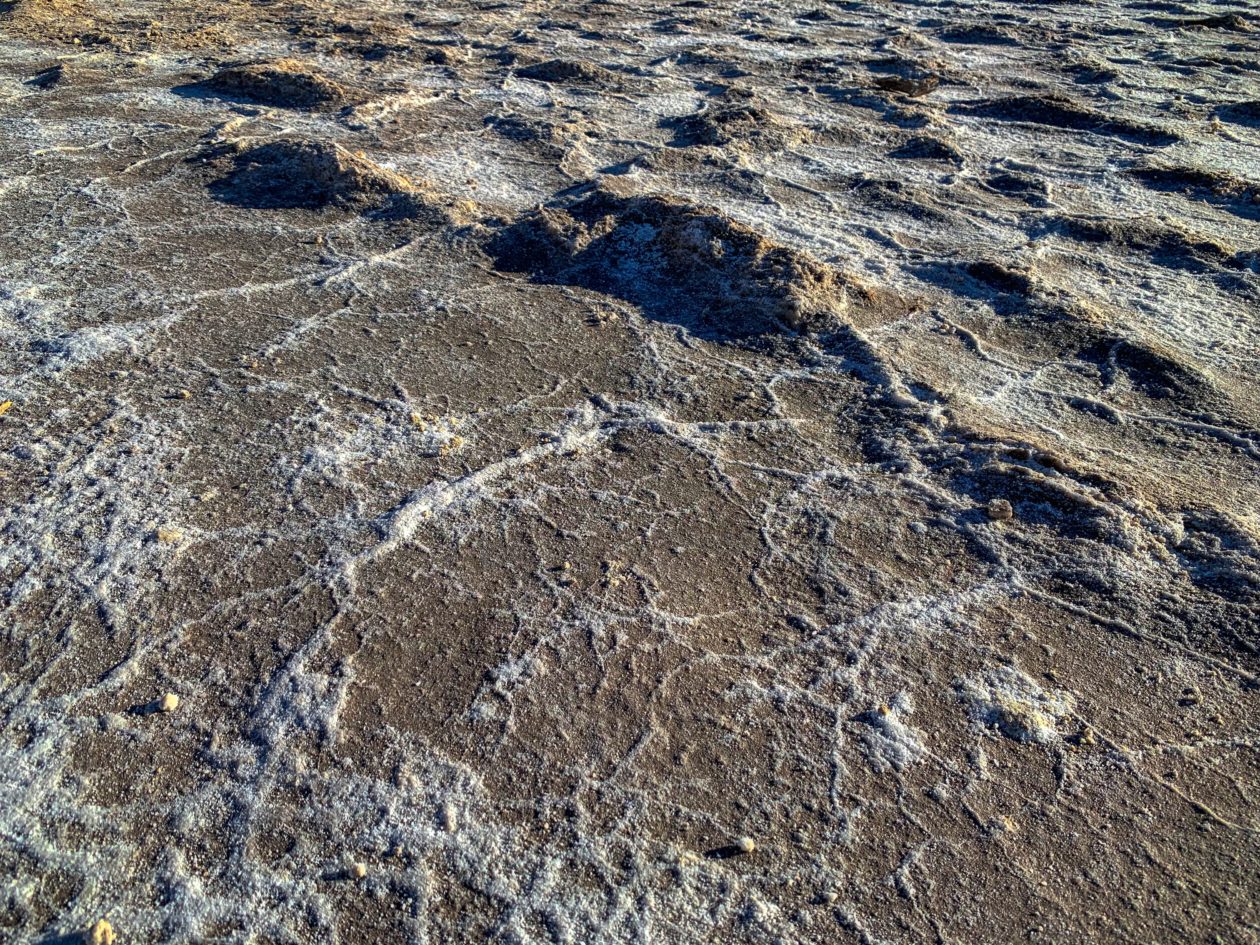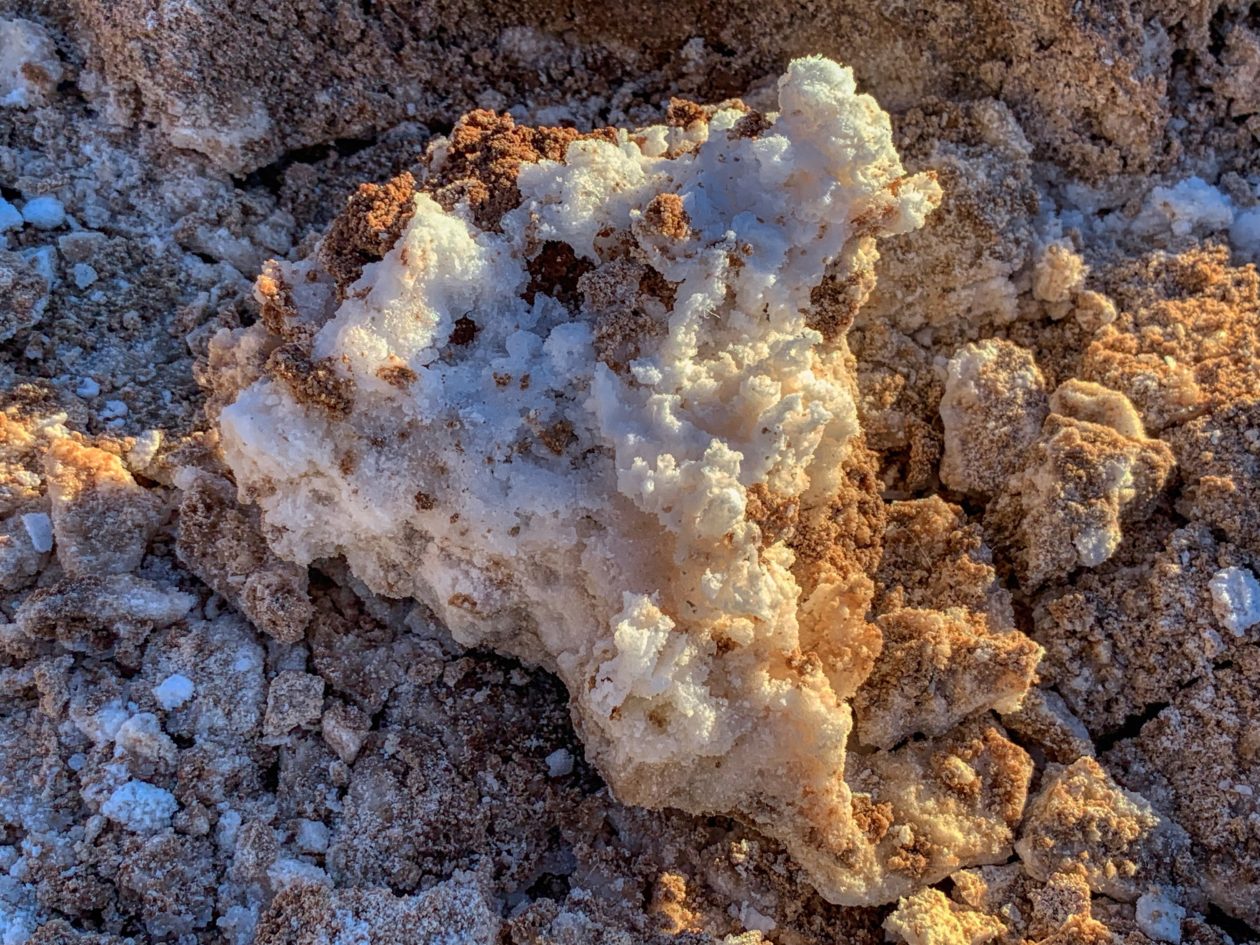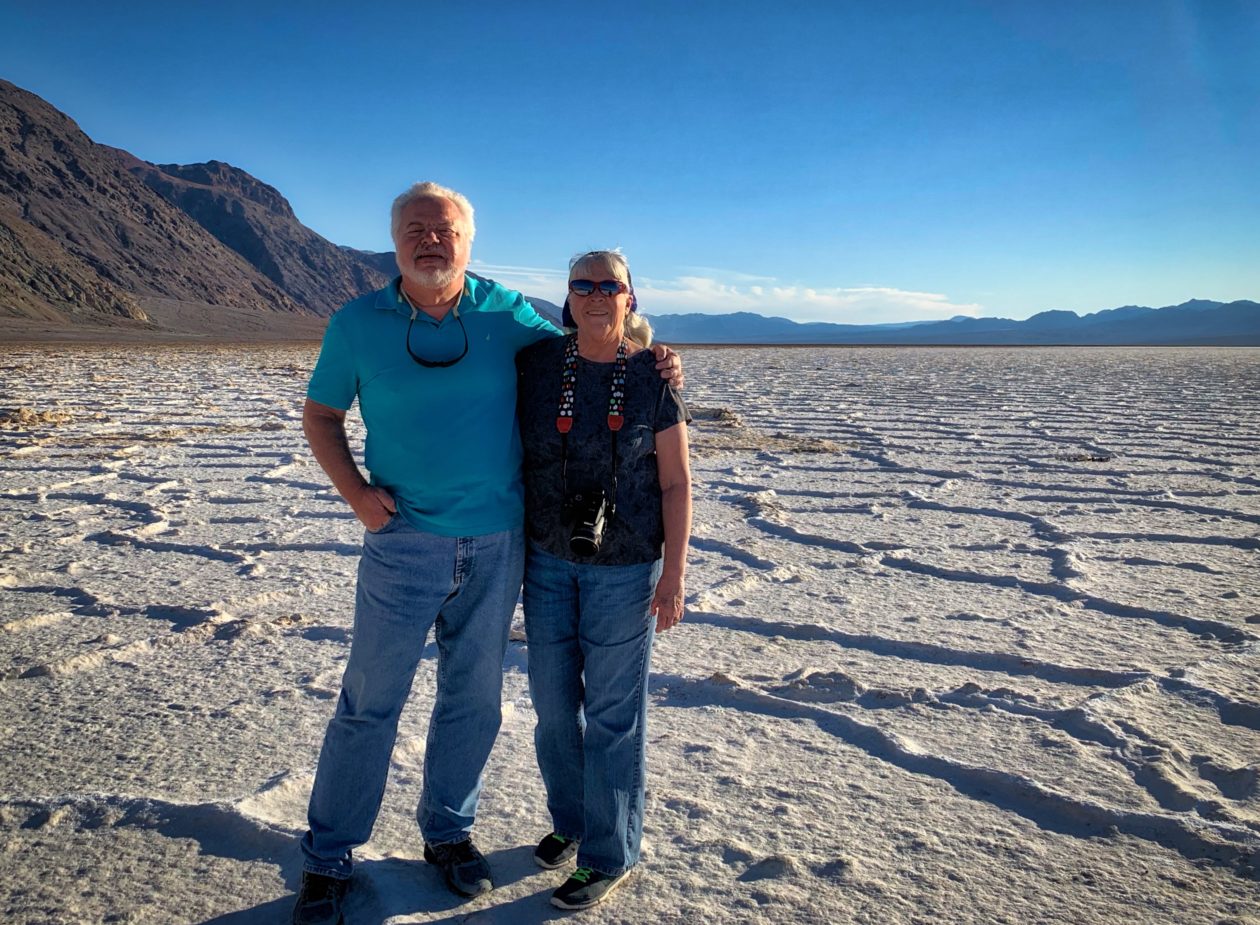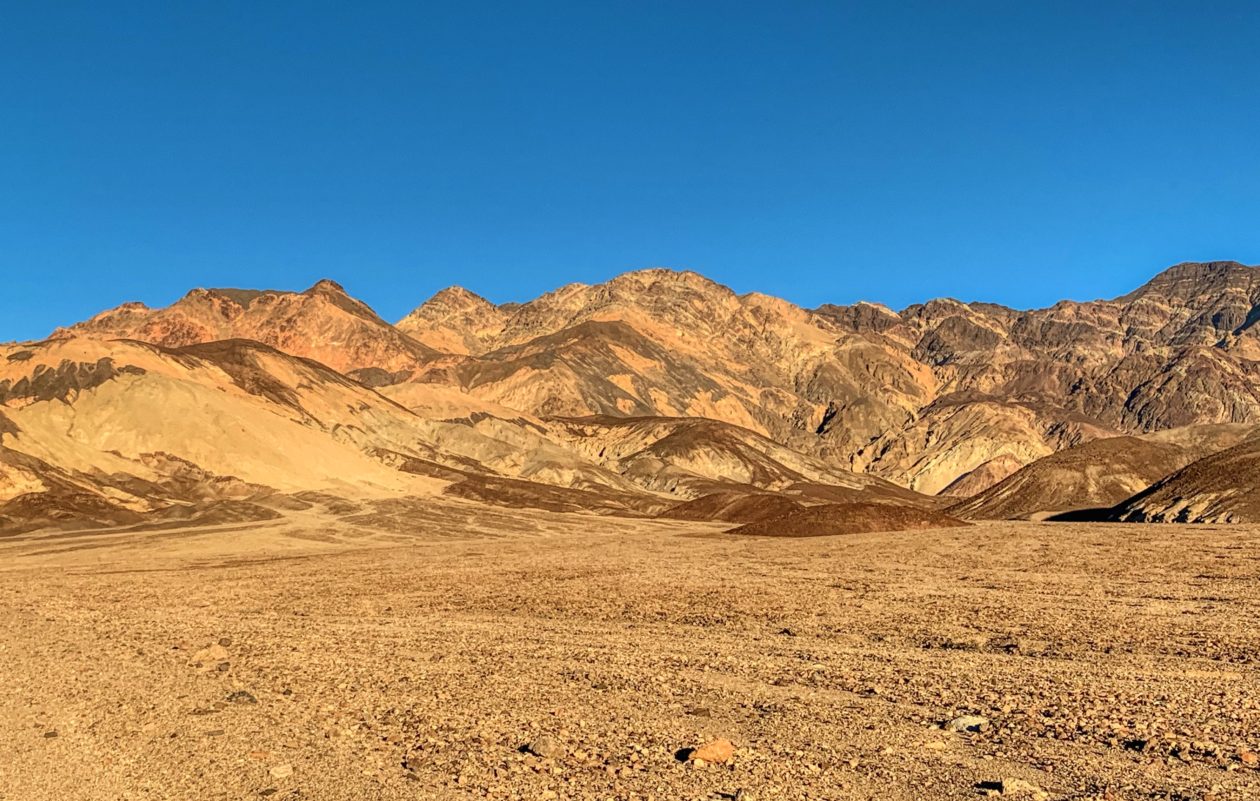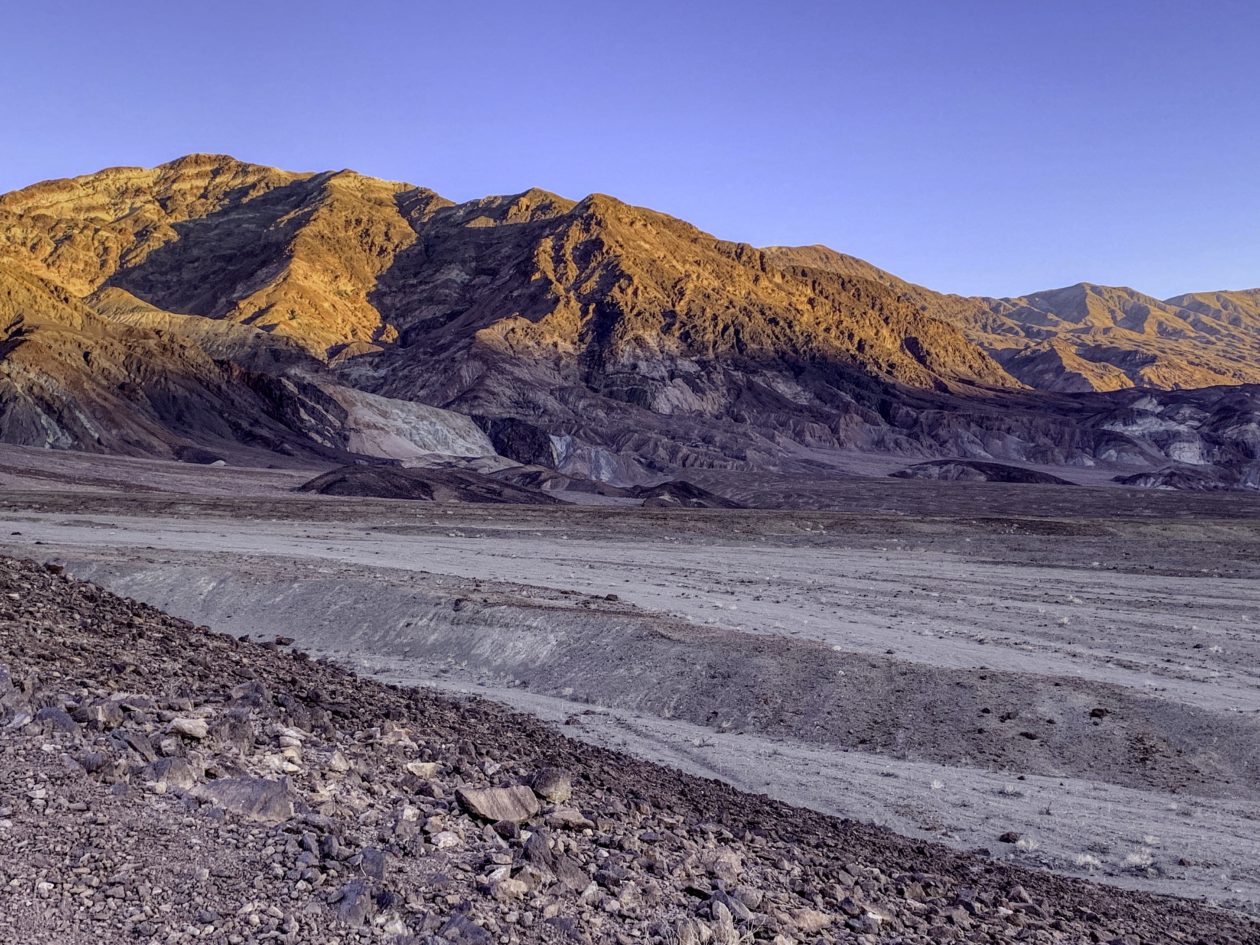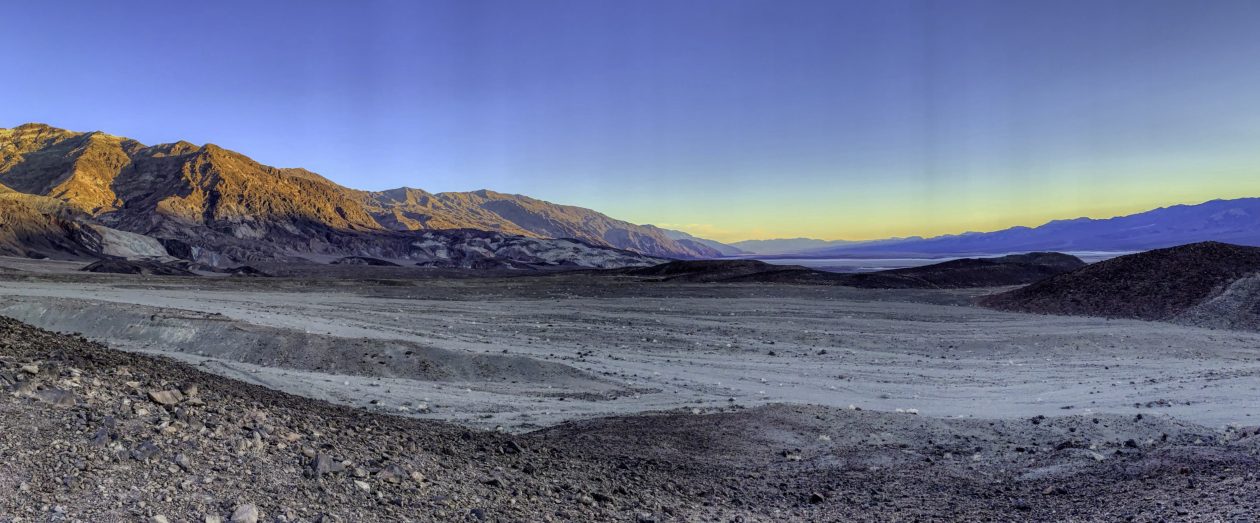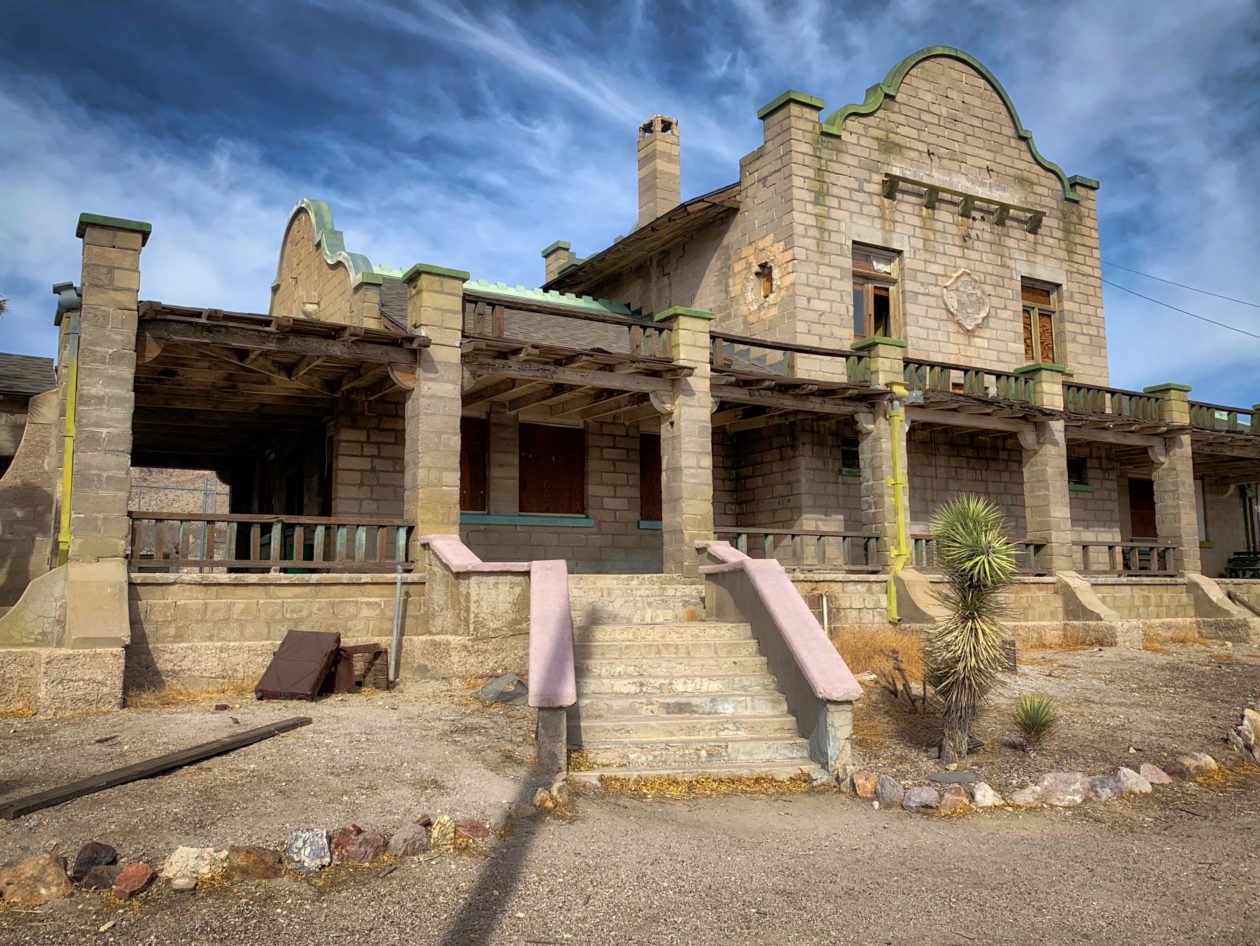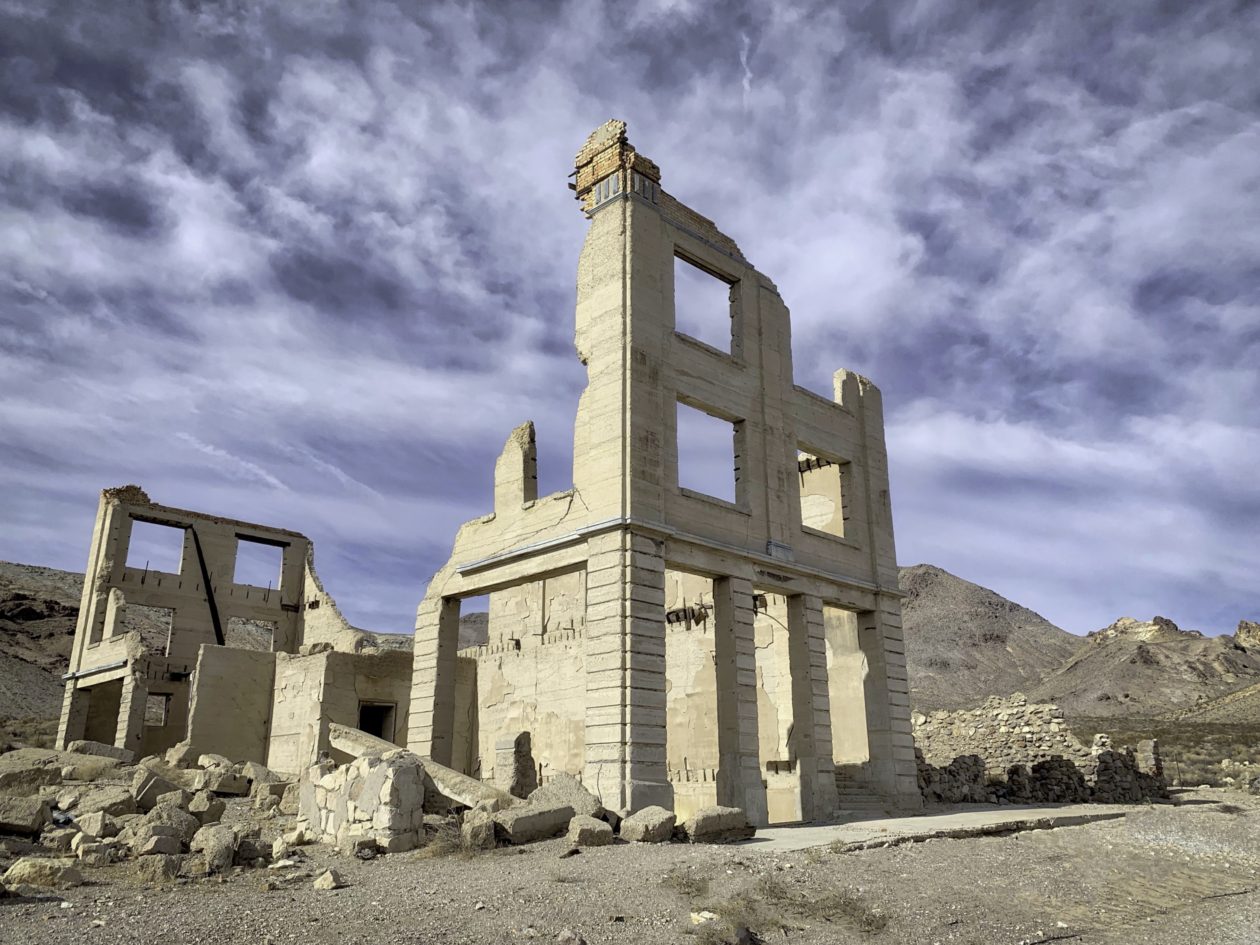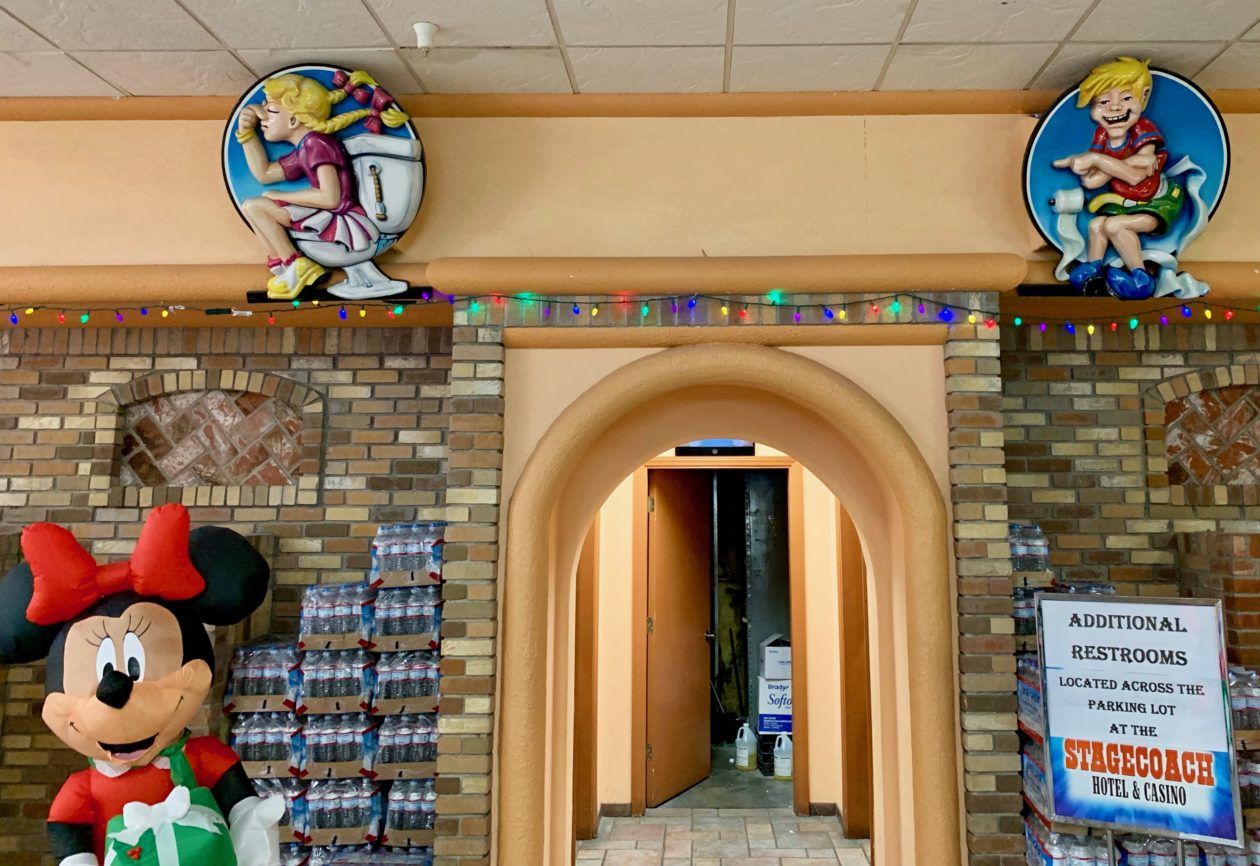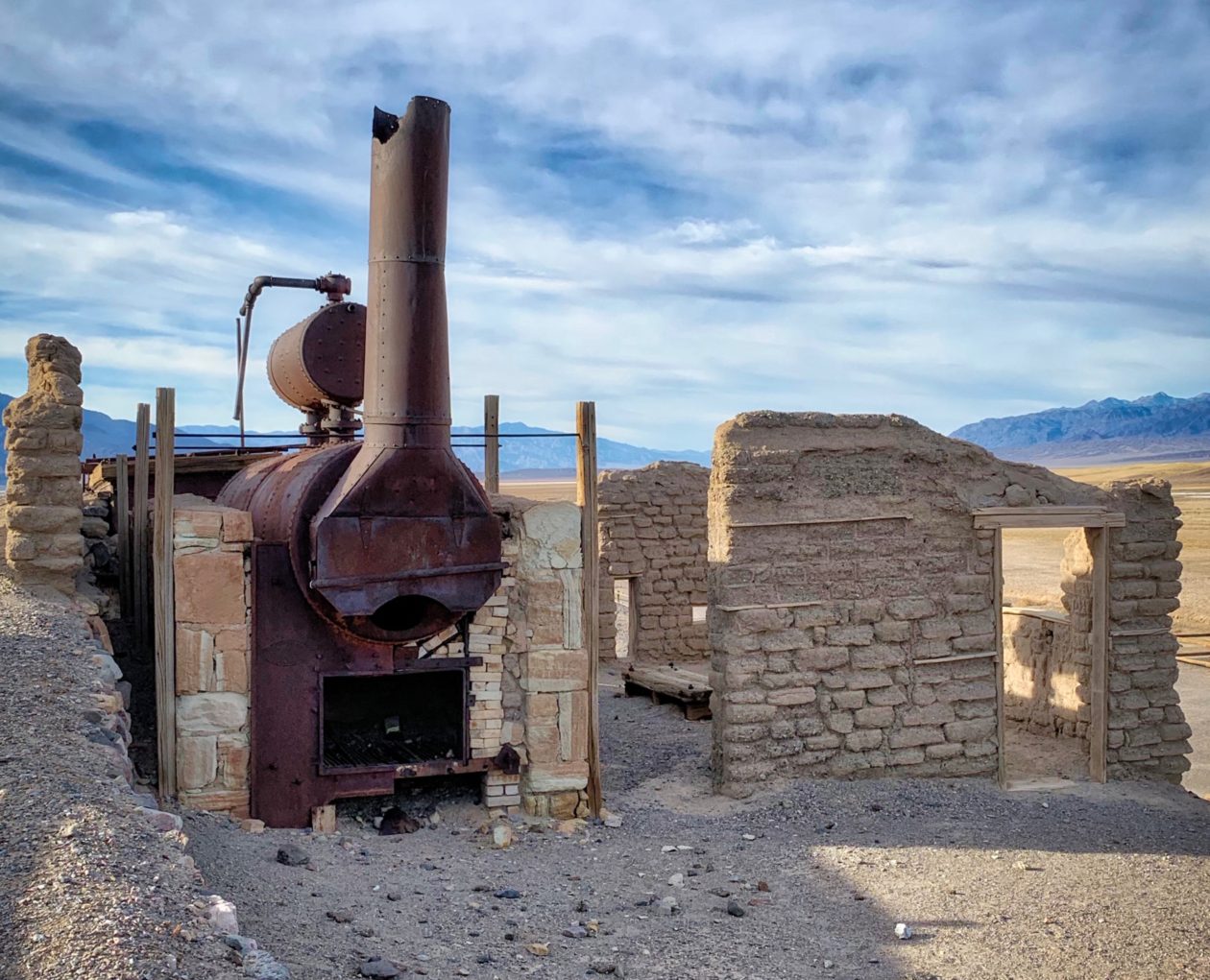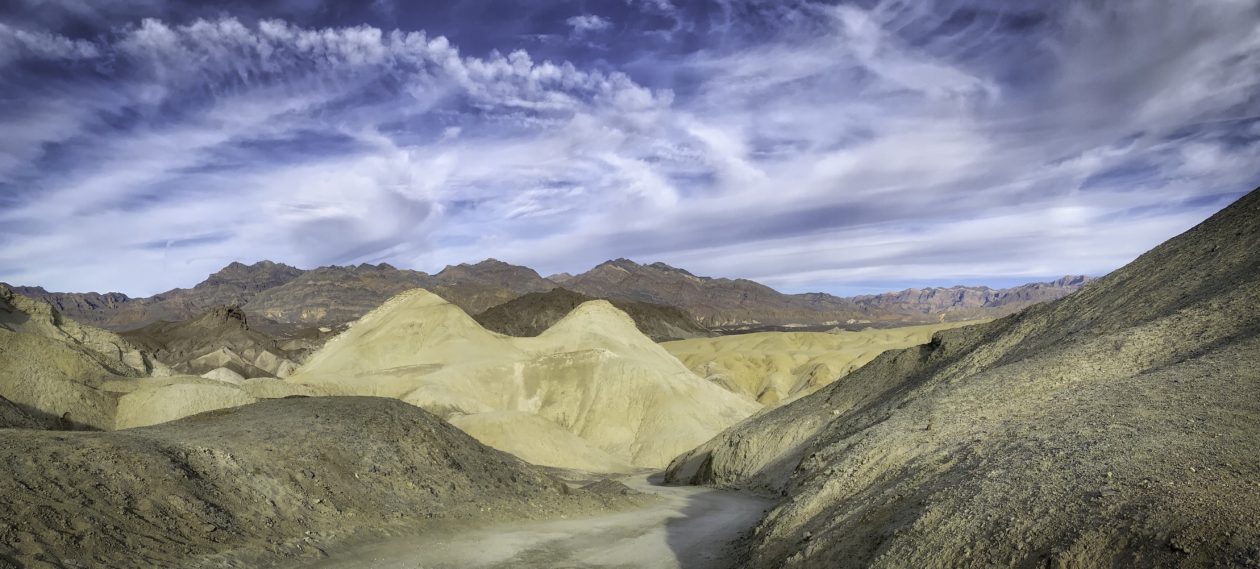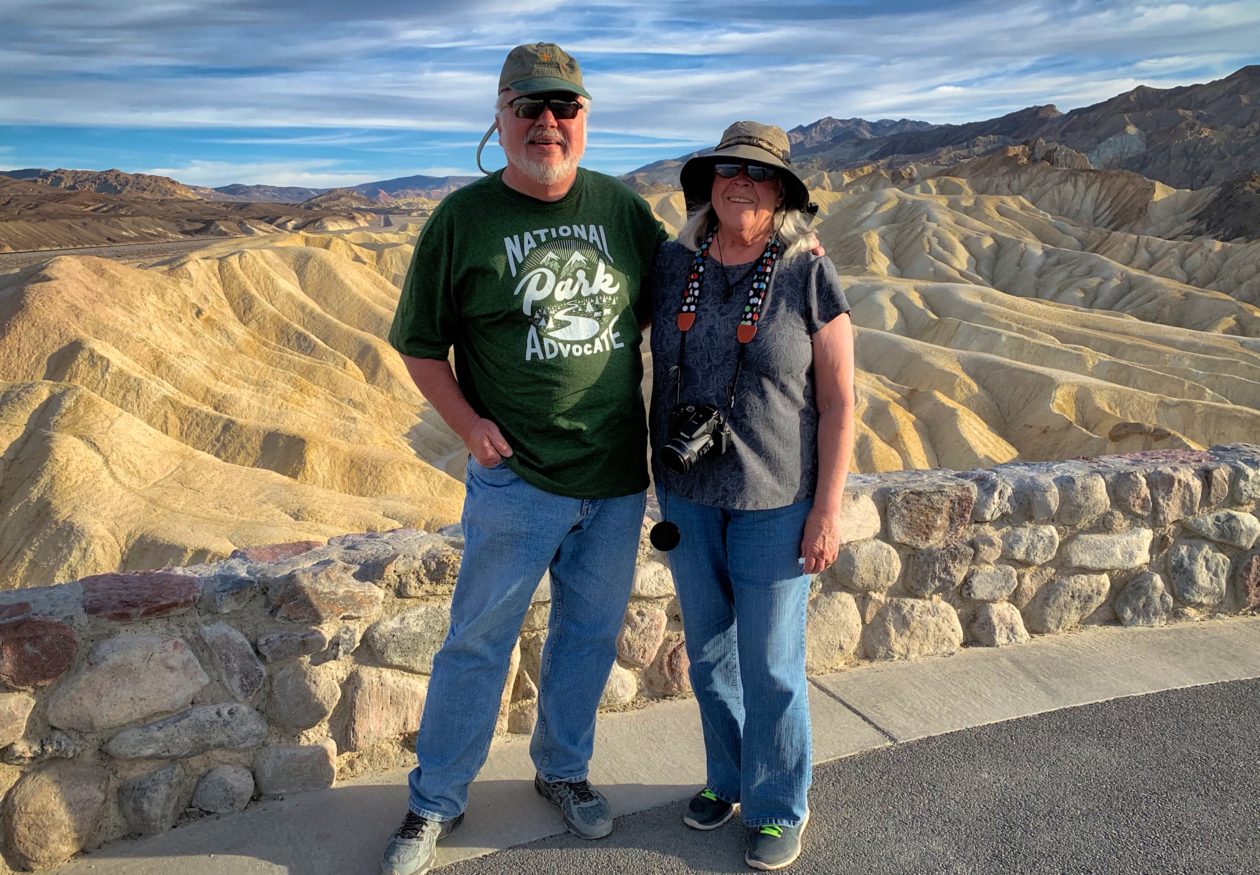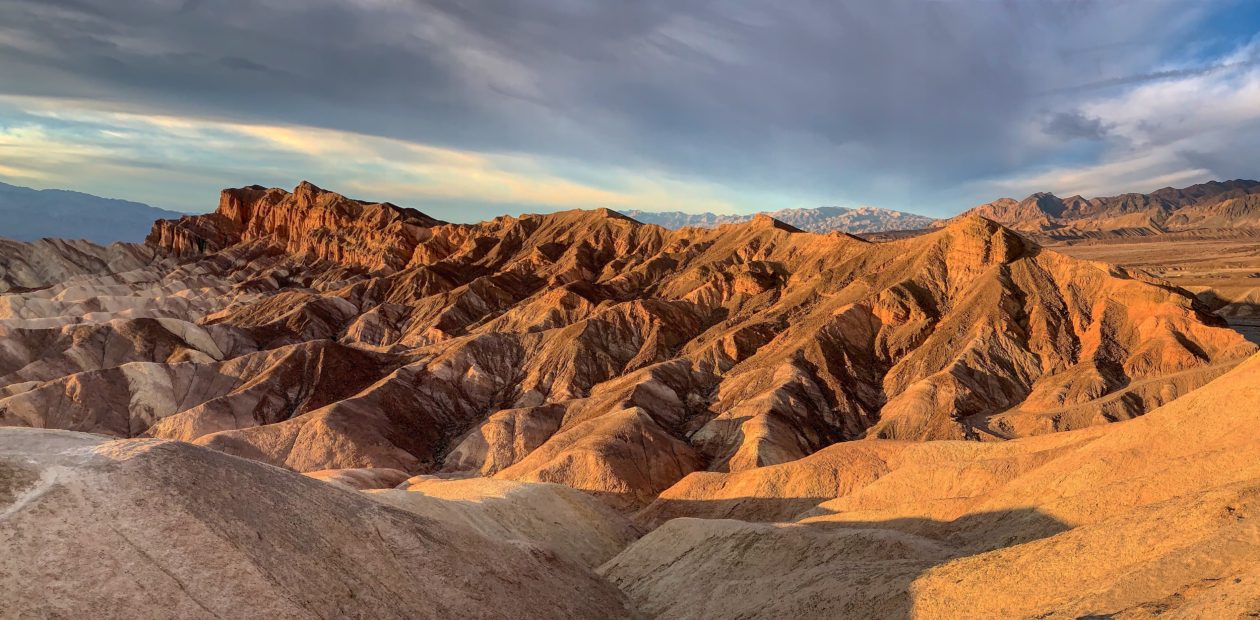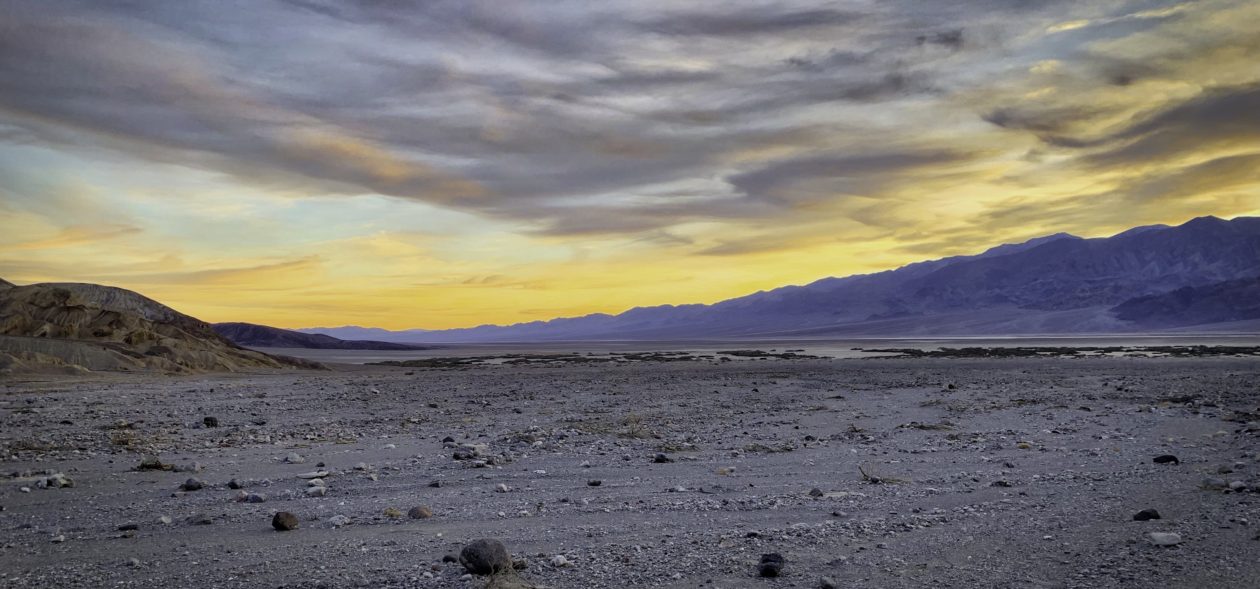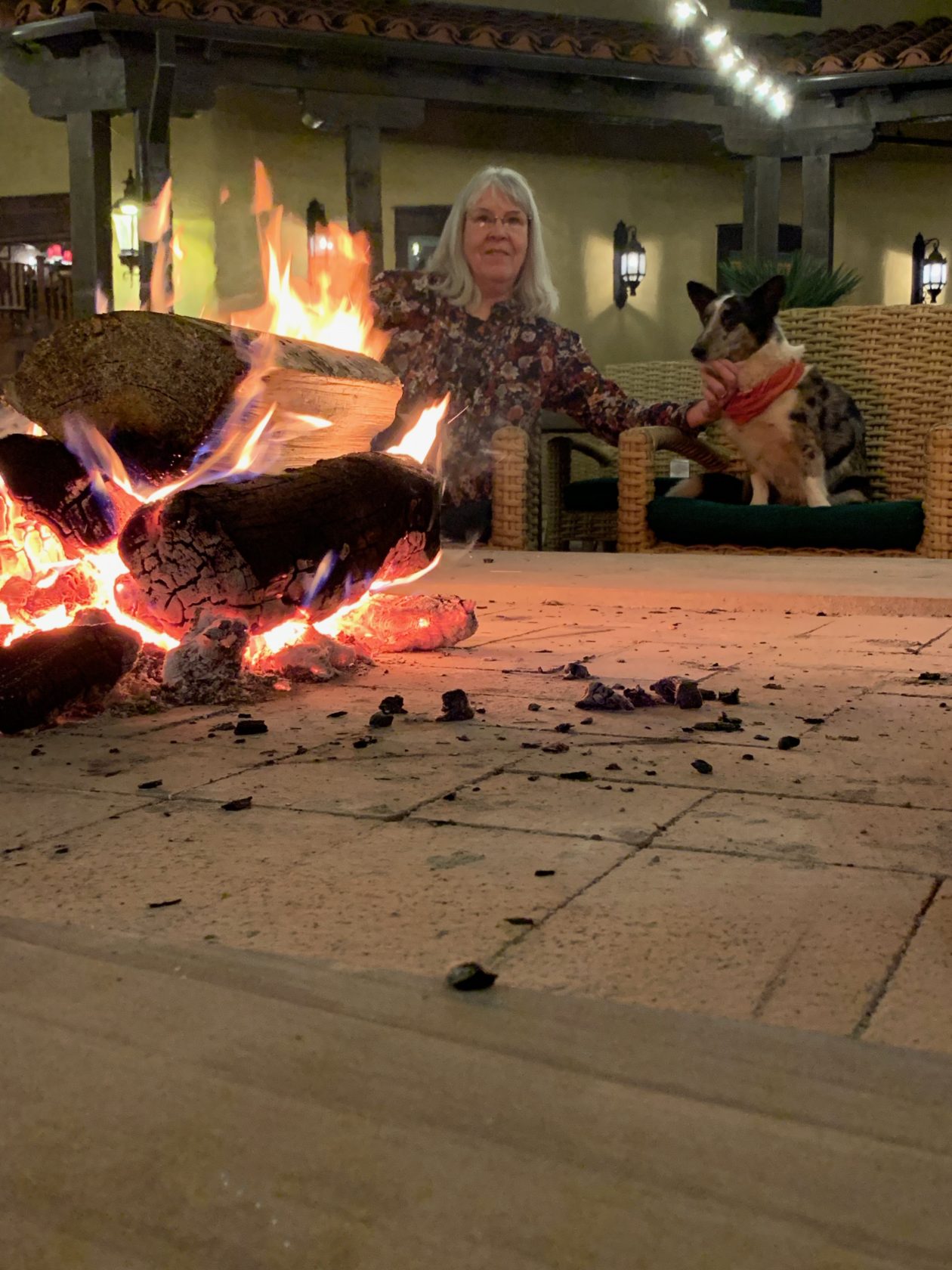While we had a great night in Las Vegas, we were anxious to get on with the main part of our trip — visiting Death Valley and Joshua Tree National Parks. It’s actually only about a 2 hour drive to Death Valley, so even leaving at a reasonable hour (9:30 am — of course, this isn’t Las Vegas “reasonable;” the streets were virtually empty on our way out of town! We originally believed that Death Valley was going to be more or less an opportunity to check off one more national park, but were we wrong! The combination of the natural beauty, history, and deserted dreams made this a fascinating and very enjoyable stop. While it was a National Monument for several years, it only became a National Park in 1994, when it was expanded by 1.3 acres! This is actually a huge park, with extreme changes in elevation and landscape — 91% of it is designated wilderness. It’s also home to the Timbisha Shoshone Tribe.
We spent much of the first day in the Furnace Creek and down the valley to Badwater Basin (the lowest point in North America, at 282 feet below sea level). When you step back and think about it, you realize that the basin of Death Valley is a 200 sure mile evaporating dish, filled by a drainage system of 9000 square miles. Every year, rains from distant peaks cause cascading floods that bring dissolved minerals with them. All of that water settles in the basin and in the summer, the water evaporates, leaving layer upon layer of salt crust. At Badwater Basin, we walked out a mile or so on the salt flats. It’s amazing to see the patterns that form as the salt crystals expand, pushing through the mud flats. Of course, with every rainy season, all is dissolved away and next year, the landscape will look different. But, of course, similar to some of the other parks we have visited, being by the mountains around sunset is an amazing experience. On the first night, we drove up around Artists Drive, a scenic loop that pass through the multi-hued hills overlooking the basin. Two things we learned about watching the sunset from within Death Valley: (1) the time of sunset is well before the published time because the surrounding mountains and it gets dark QUICKLY, and (2) when I say dark, I mean DARK! Finding your way around at night can get pretty exciting. We spent the evening having dinner and chatting up some of the locals and other guests. One guy was traveling around the country with his dog, looking for his spiritual place. Everyone’s on a journey…
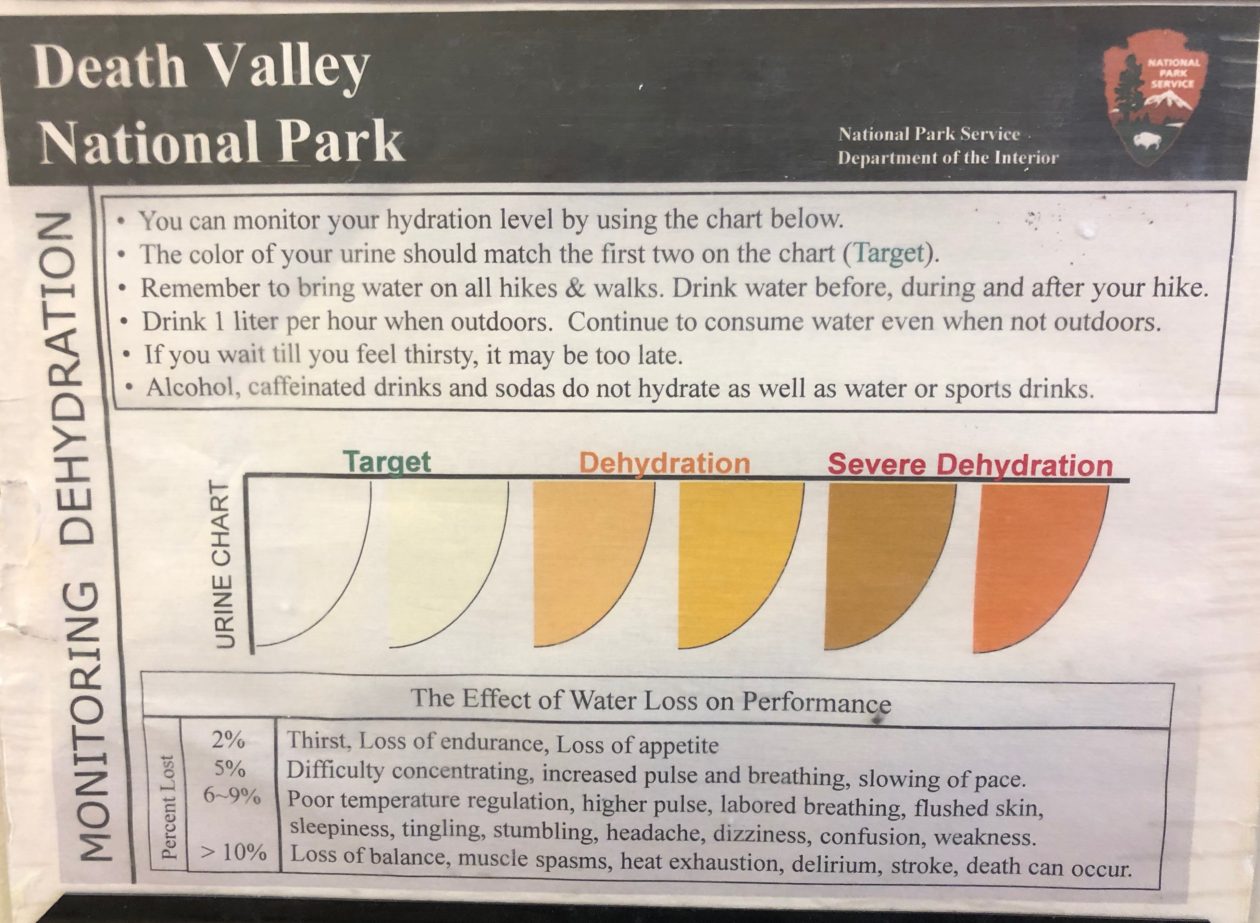
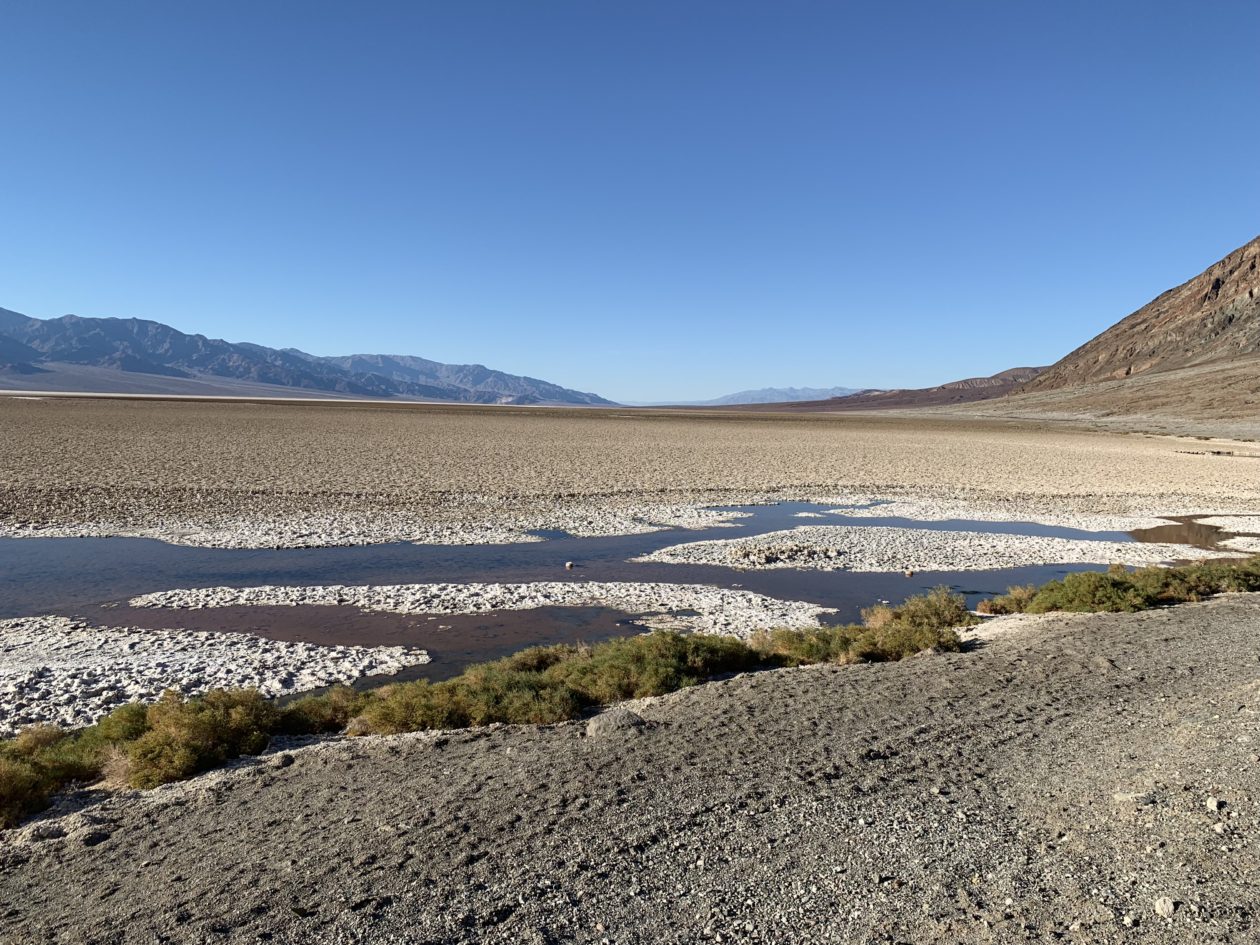
The next day, we covered a fair amount of territory and focused on some of the history and the fortunes made and lost in this valley. We started the day in Stovepipe Wells to see the Mesquite Flat Dunes, a large number of 100+ foot undulating formations that are surrounded by mountains. After visiting Great Sand Dunes National Park a few months earlier, we were a little less awe struck than many of the other visitors around us. We then headed east into Nevada to visit Rhyolite, the largest ghost town near Death Valley. At its peak in the early 1900s, this mining town had nearly 10,000 people, an opera house, 50 saloons, and 2 churches (that seems like the right ratio). This area is now controlled by the BLM and the structures are in various states of disrepair. Since there aren’t any real established paths in the area, you also come across lots of old rusted cans, broken bottles, and all sorts of other detritus that really get you thinking about what life must have been like here. From there, we made a short stop in Beatty, the nearest town to the park. It was a great place to stock up on water, snacks, etc. that are outrageously priced in the park. But the other reason to go is to see the herds of wild burros roaming around the streets. While they are hated in the park (they destroy habitat for other species), they are tolerated and a tourist attraction in Beatty. Of course, these burros aren’t native to the area; they are the descendants of burros who either escaped or were turned loose by prospectors who worked the area in the late 1800s. And speaking of mining, we then visited a couple of mine ruins, where dreams turned into nightmares. The Keane Wonder Mine was one of the most successful gold mines in the valley, but was largely tapped out about 10 years after it was dug. They tried to turn it into a tourist destination and installed a tram, but legal troubles turned this into the relic it is today. It was off limits to visitors for several years but, after a lot of work by the NPS, it reopened in 2017. The other stop we made was at the Harmony Borax Works, a mining and processing operation that opened in the late 1800s. A lot of the old machinery, tanks, piping, and building ruins dot the site. At its peak, 40 men (mostly Chinese) produced 3 tons of borax per day, which was then transported 165 miles to the railroad town of Mojave by those famous 20-mule teams. Even after switching to steam driven tractors to speed up the transport, the operation only lasted for 5 years before shutting down. As the afternoon was waning, we headed over to 20-Mule Team Canyon and then to Zabriskie Point to watch the sunset. In both these areas, there is an amazing blend of undulating mudstone hills that are surrounded by black mountains in the background, along with multi-colored hills of red, pink, green, and yellow that come from the oxidation of different metals and the decomposition of the volcanic tuff in the area. What an amazing place to watch the sunset.
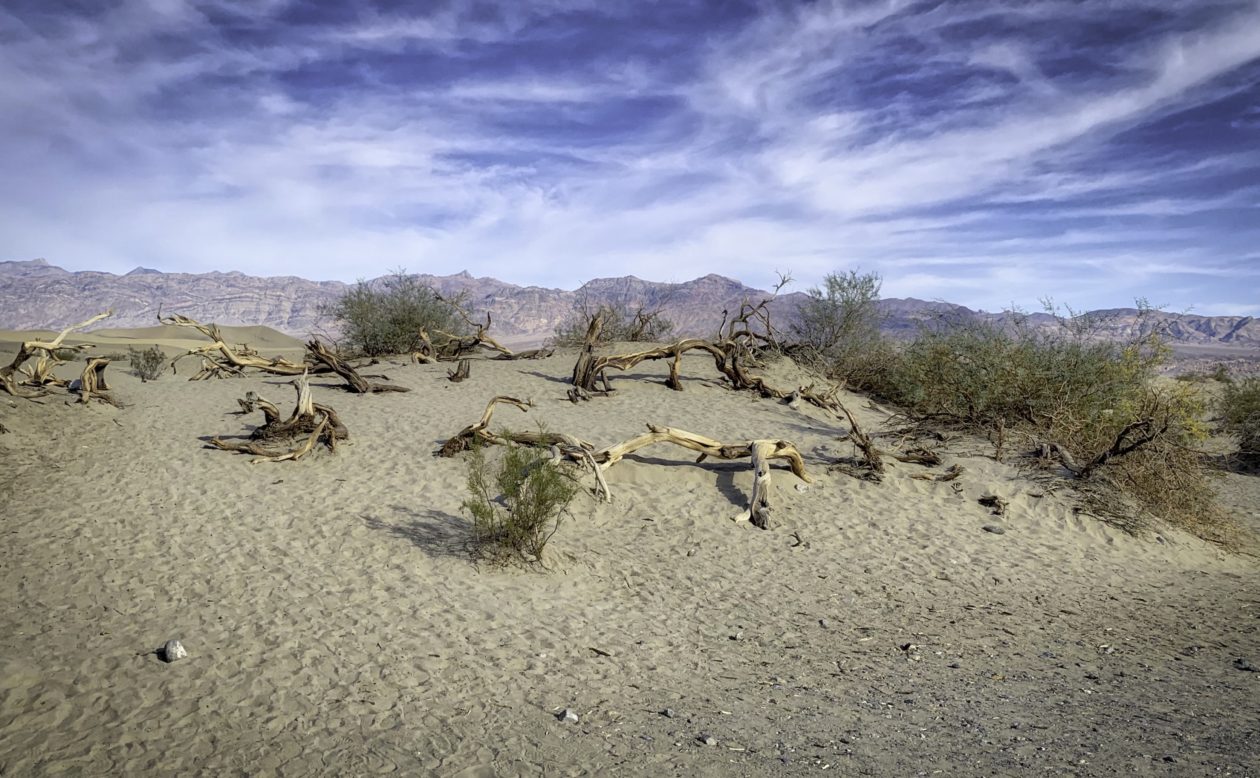
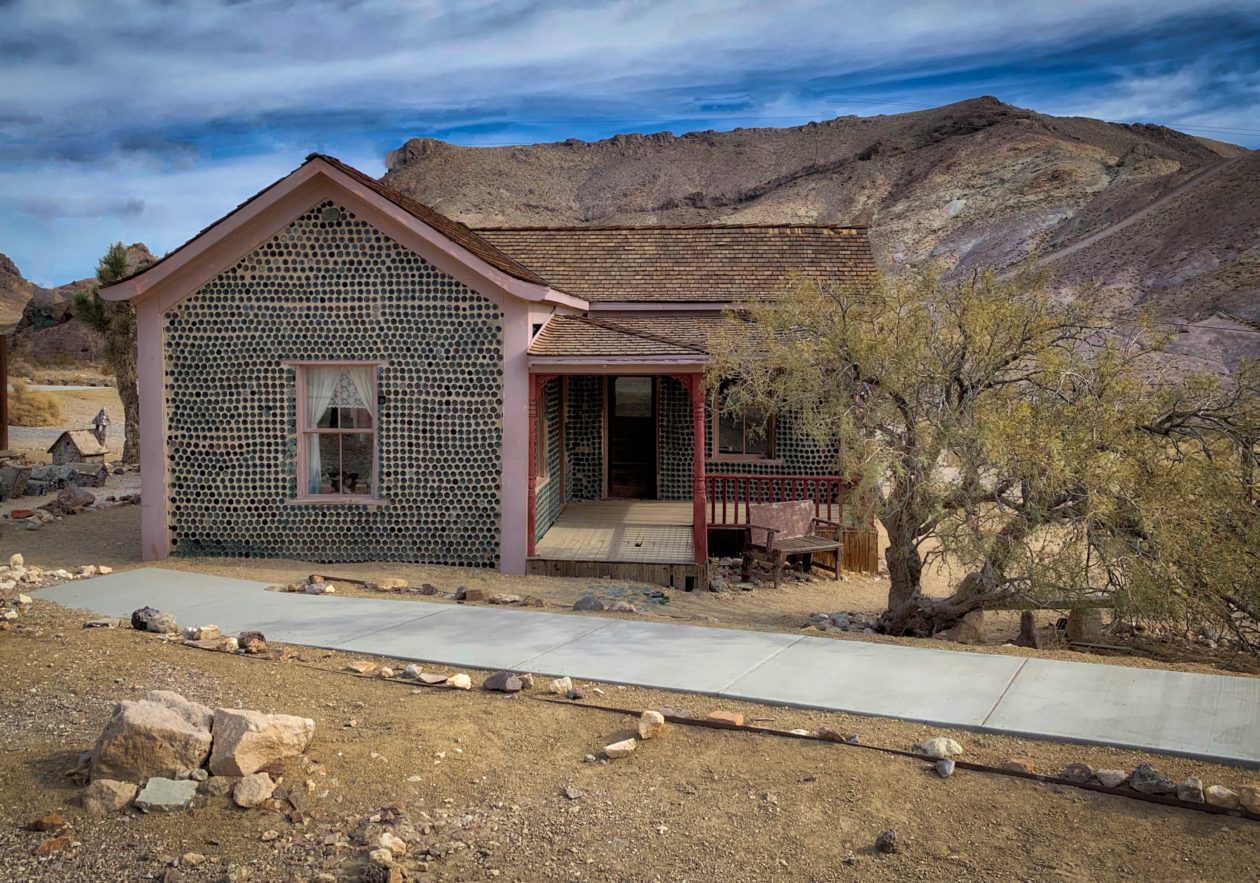
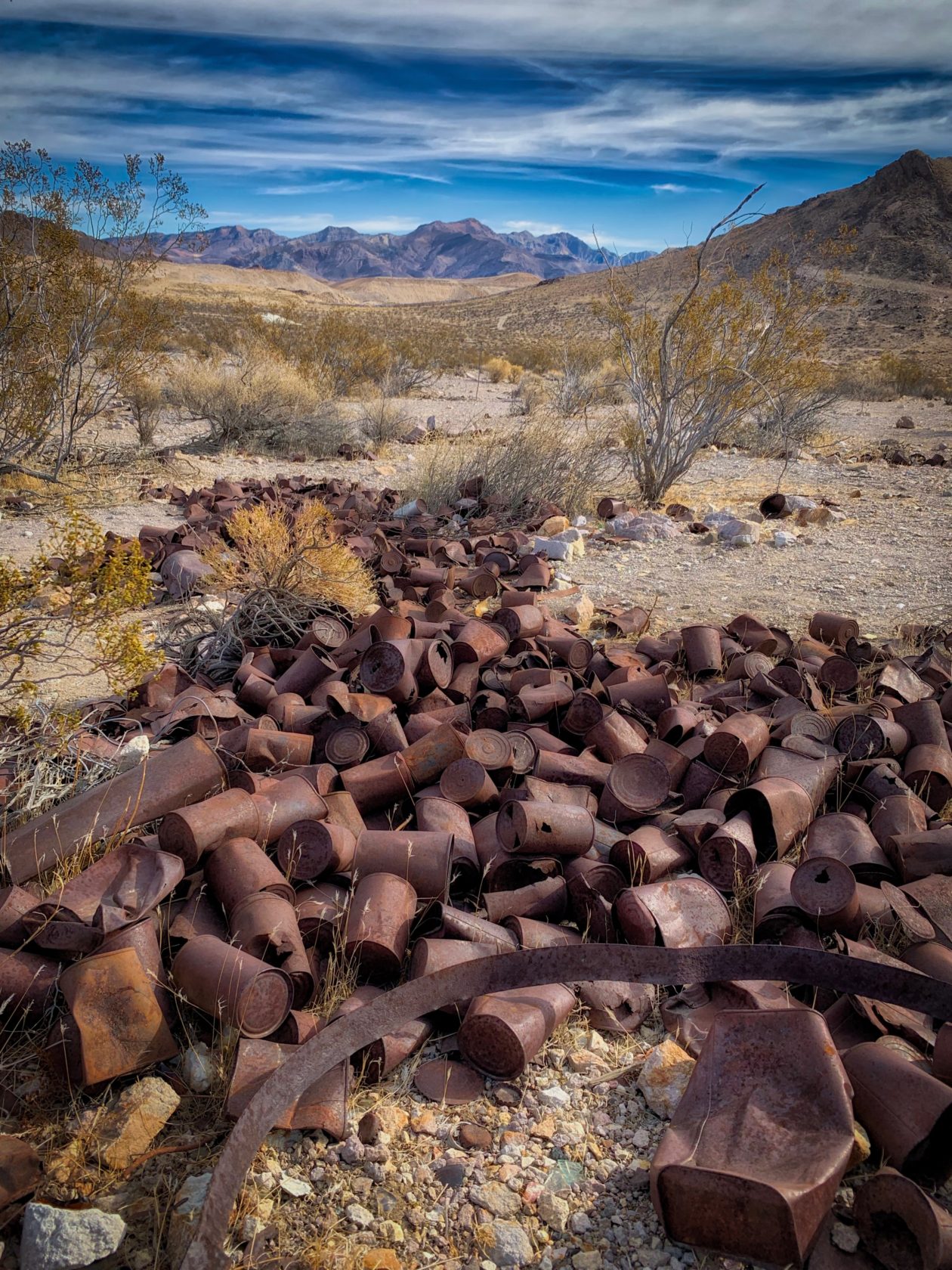
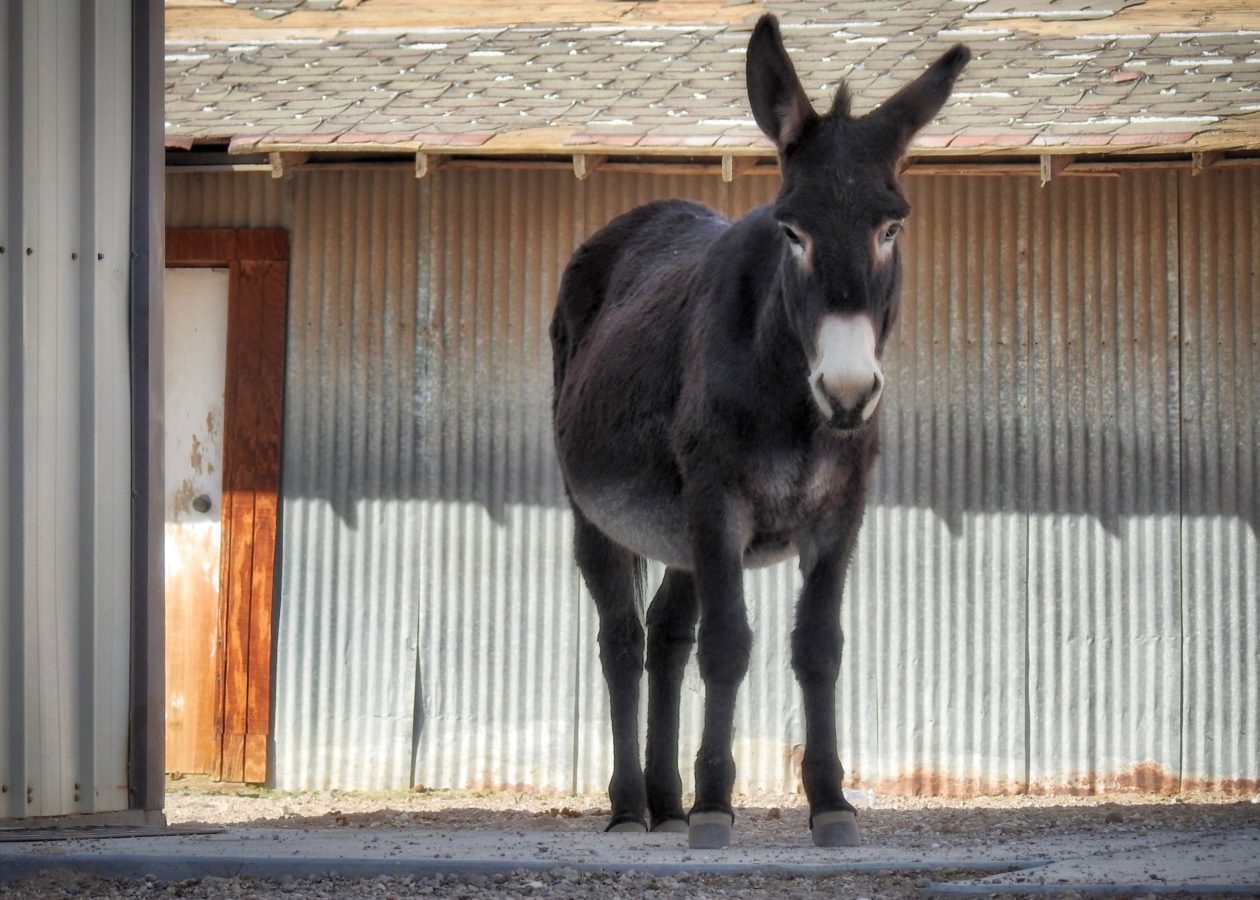
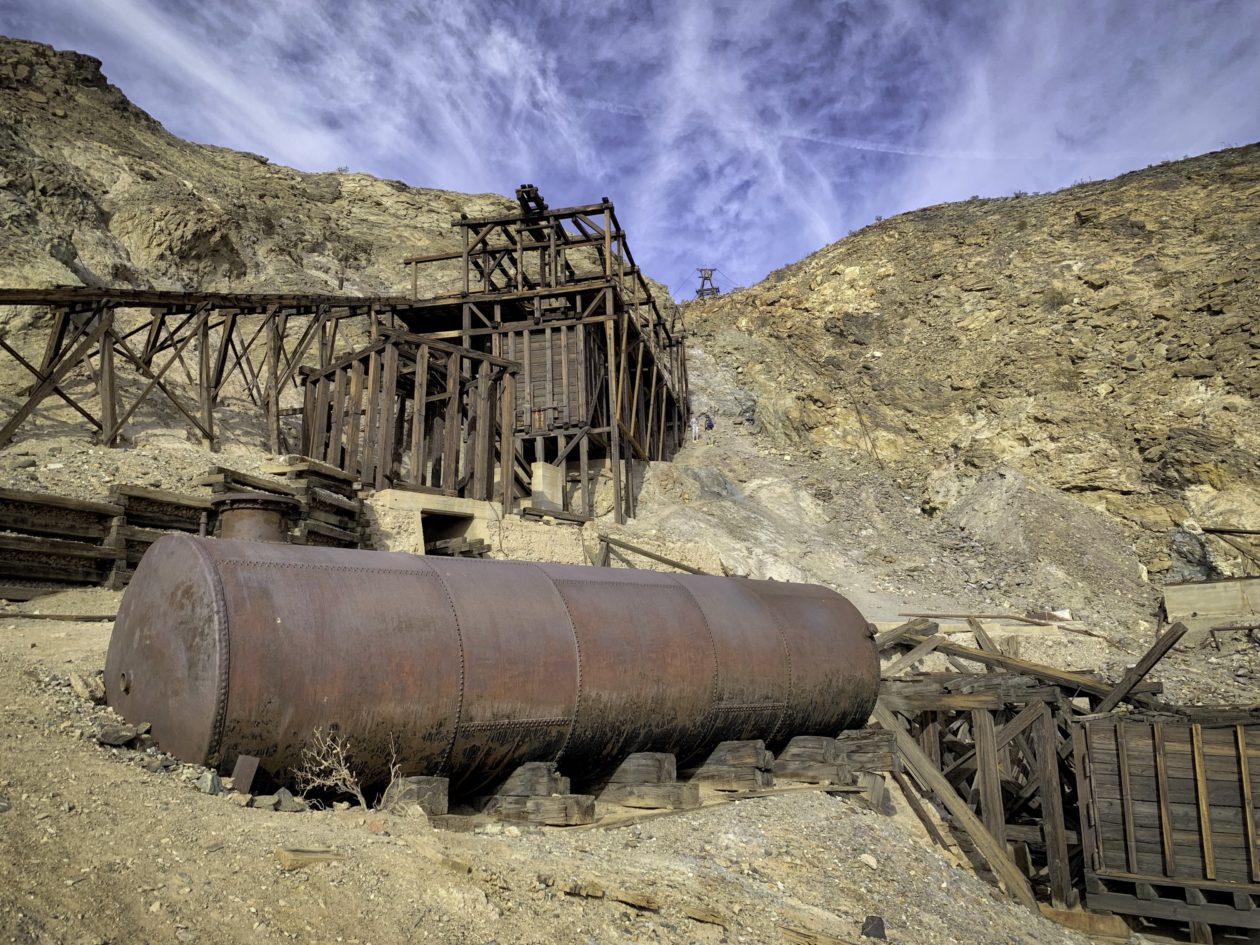
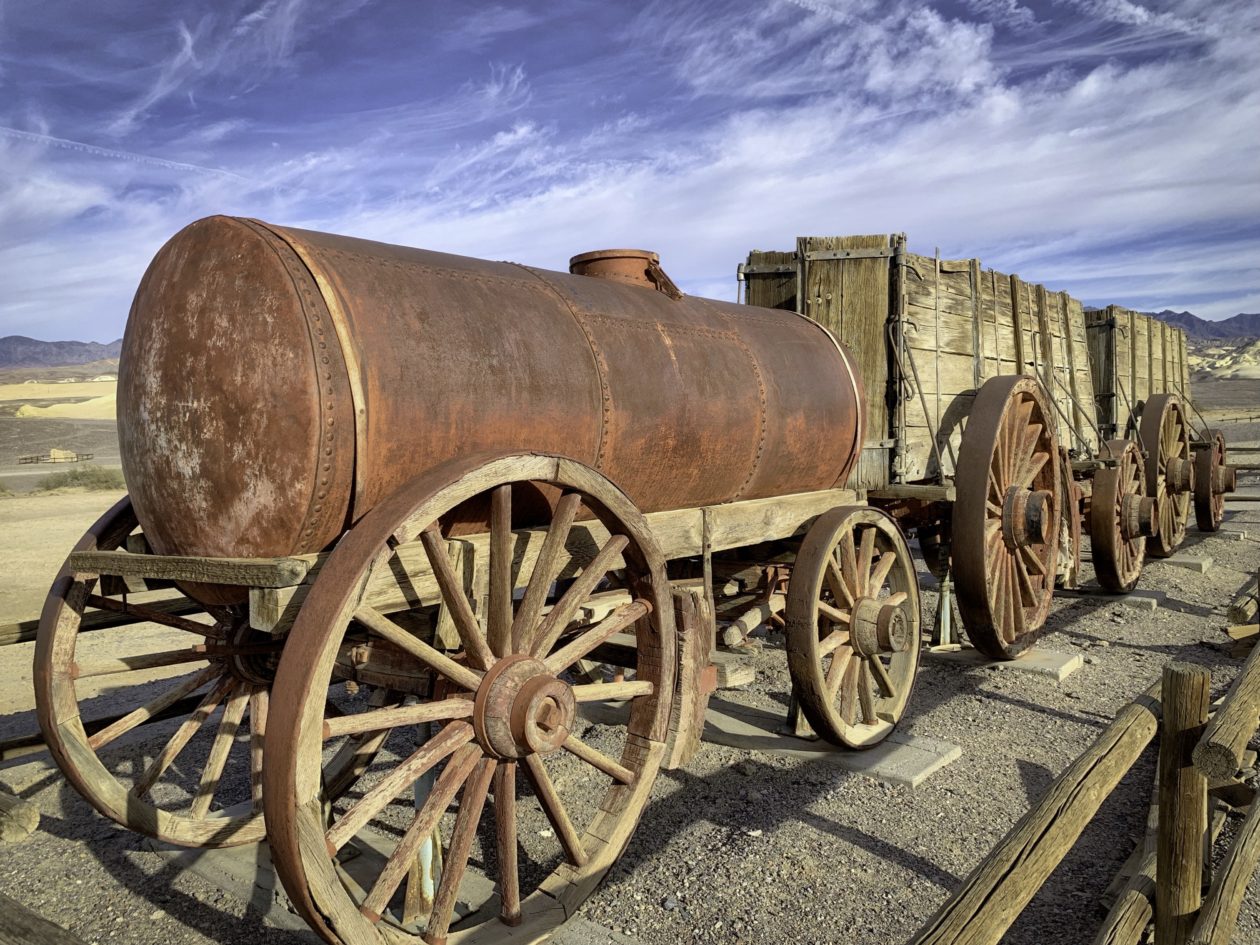
We finished off our trip with a nice dinner at the Inn at Death Valley. It sits on top of a steep hill, so you can get to it by walking down a steep tunnel (old mine shaft) that reminded me of going to Hitler’s Eagles Nest outside of Berchtesgaden in Germany. Anyway, it was a great visit and I hope we make it back!
This entry was posted in California, National Park/Monument, Travel, United States